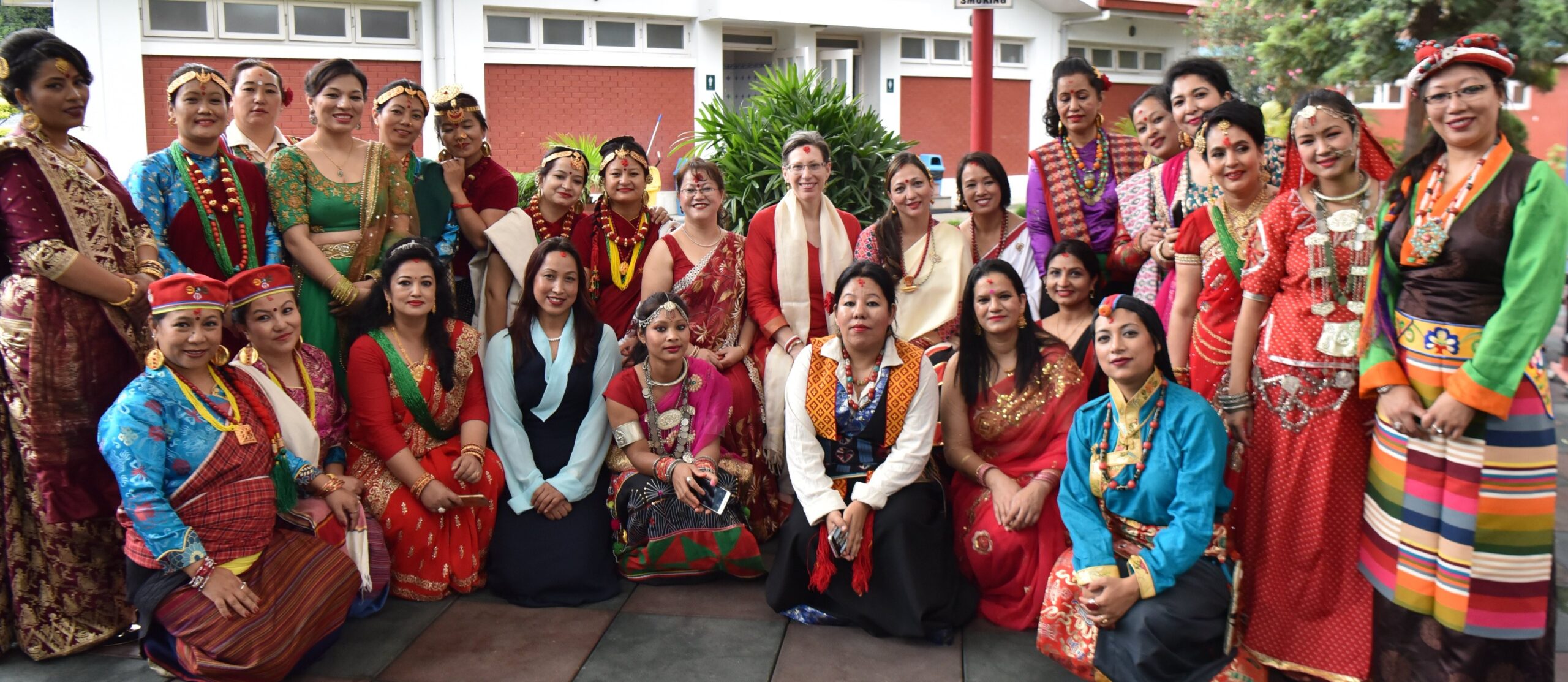
The population of Nepal was recorded to be about 26.62 million according to a recent survey done by the Central Bureau of Statistics, Nepal. The population comprises about 101 ethnic groups speaking over 92 languages. Though there are numerous dialects, the national language, Nepali, is the language of unification and is spoken and understood by the majority. Many ethnic groups have their own mother tongues. English is also spoken, especially in government and business offices, and is the medium of education in most private schools in Kathmandu and some other cities.
Ethnic Diversity in the Kathmandu Valley
Kathmandu Valley represents a cultural cauldron of the country, where people from varied backgrounds come together in a melting pot. Nepal is a multicultural and multilingual country. About 80 percent of Nepalese are Hindus, and the remaining 20 percent are a mixture of Buddhists, Muslims, and Christians. The natives of Kathmandu Valley are the Newars, whose culture integrates both Hinduism and Buddhism. Traditionally, Newars were traders or farmers.
Despite the multi-religious nature of Nepal, each religion holds its own significance, and festivals are celebrated openly. People from other religions also participate in each other’s celebrations. It is fascinating to see different ethnic groups—almost a hundred in number—living together, helping each other, and sharing in each other’s joys and sorrows.
Everywhere in Nepal, the Nepali language is spoken, even by those who have their own ethnic languages. In every corner of the country, if you greet someone with a “Namaste” gesture, you will receive the same in return along with a welcoming smile. “Namaste” is the universal greeting of Nepal and can be used at any time of the day.
In a typical Nepali household, the morning begins with a shower, worshipping God, and then drinking morning tea. Some people also visit nearby temples for daily worship. In Nepali, tea is called “Chiya,” and it is made with water, milk, sugar, and tea masala.